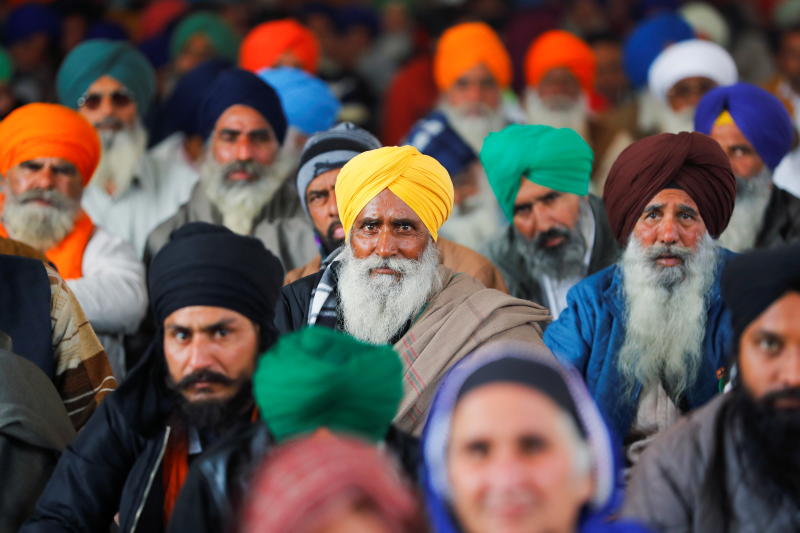
Indians have been in Kenya for more than a century. Beyond business, trade and manufacturing, they have not extensively socially integrated into Kenyan society.
They have kept a low profile even on matters of the heart, which naturally know no boundaries.
Think about it: getting a mzungu husband or wife is still considered a feat and is hard to copy. This doesn’t apply to being married to an Indian because it rarely happens.
Kenyans have been studying in India for a long time, but they rarely bring home Indian wives or husbands. Compare this with Kenyans who study in the West or even in the former Soviet Union, now Russia, and the other regions of the world. Remember former US President Obama?
Indians, and even Pakistanis, have largely kept to themselves, setting up temples and institutions. They generally live in certain urban centres and leafy suburbs.
They also hold on to their culture, from their clothing to their language and naming system - except for a few Goans with Christian names, a legacy of conversion into Catholicism by the Portuguese. I recall my high school maths teacher always wore a sari.
The slow social integration of Indians in Kenya has created a false illusion about them. Indians have been integrated elsewhere. Do not forget there are now Indian MPs in Parliament, unlike the Britons who brought them to Kenya to build the railway line.
Indians went beyond building the railway; they helped defeat the Germans in World War I, a feat rarely appreciated. There is an Indian soldiers’ cemetery in Taita. Where would we be if Kenya were overrun by the Germans?
Beyond our borders, Indians are doing very well, and silently so. In Britain, they are in the Cabinet and hold big positions in the corporate sector. They were well placed to take up British industries as the country de-industrialised. Remember who bought Land Rover and Jaguar?
Across the Atlantic, their clout is growing. They had a governor in Louisiana and are disproportionately represented in Ivy League universities. The CEO of Sun Microsystems, Microsoft, Google and the former Coca-Cola CEO are of Indian descent.
Unlike the Chinese who started from scratch in their efforts to make the world their playground, Indians seem to prefer riding on existing institutions. This makes them unnoticeable, ruffling no feathers. India itself is becoming a magnet for services and manufacturing. We go to their hospitals when we are sick as they are cheaper. We get most of our drugs from India.
While China is the workshop of the world, India is the pharmacy of the world.
But the civilisation along the Indus Valley is going beyond traditional industries like pharmacy, medicine and IT. It is shifting to new frontiers like car manufacturing. Can you compare the Mahindra of 1996, which was given to the Kenya police, with the current ones, including trucks? Noted how the Bajaj motorbike has been upgraded to the Bajaj car? India has even developed its own Covid-19 vaccine.
Academic dominance
Indians are a force to reckon with in academia, particularly in science, technology, engineering and mathematics (STEM). Remember CV Raman, the Indian who won the Nobel prize in physics in 1930?
In the US, the retiring dean of the Harvard Business School is of Indian descent. Indians dominate computer science and have taken over marketing by making it mathematical, keeping out ‘pedestrians’.
Indians go to Ivy League universities if they fail to get admission to the prestigious India Institutes of Technology (IITs).
These institutions, with 21 more in the pipeline, have contributed to India’s rise into an economic powerhouse.
They are modelled like the Massachusetts Institute of Technology (MIT). The Indian Institutes of Technology Act of 1961 declared IITs to be institutions of national importance.
Can we follow the Indian model? Have you noticed that the Indian president is one of the key leaders in IITs? Few know India has a president; we hear more about the prime minister.
Not much is taught about India in our schools beyond the Indian Ocean. But slowly and surely, India is becoming an economic powerhouse. Remember, it is also a nuclear power, has joined the space club and has a presence on the moon.
Why are we not willing to learn from our neighbour across the Indian Ocean? They speak English like we do. Paradoxically, we overfly India on our way to China, which is now jostling with the US for global leadership.
History demands we pay attention to India. Economic and political power has throughout history revolved around oceans and seas.
We started with the Mediterranean Sea and the Roman Empire, then the North Sea and Britain, the Atlantic with the US and Europe.
Next was China and Japan, with the Pacific Ocean. The remaining ocean is the Indian Ocean. Need I say more? Namaste.
- The writer is an associate professor at the University of Nairobi




No comments :
Post a Comment